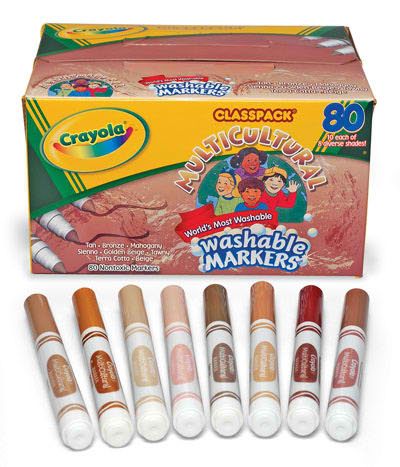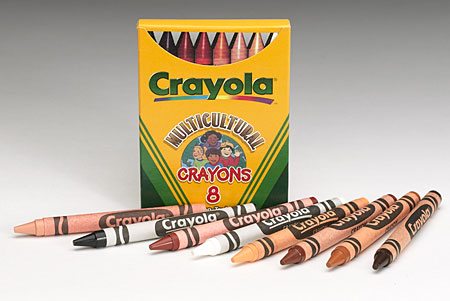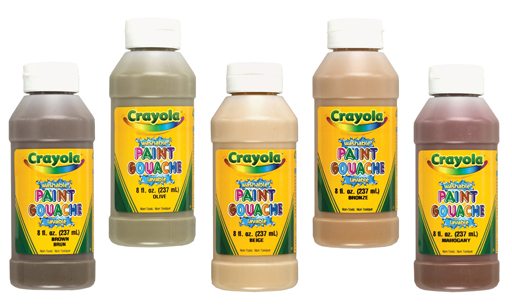Recently, Latino Rebels founder @julito77 ;wrote a very thought-provoking post called ;The Perils of “Latino” Marketing: Lessons Learned from the “Los IceHogs” Hockey Night. It wasn’t clear to some people why trying to appeal to the Hispanic community with a promotional poster of maracas, Corona, and Dora the Explorer can be problematic. So Julito explained why most Latinos don’t want to be represented by stereotypical imagery simply to attract attention and boost ticket sales.
He also mentioned that other sports teams, such as the New York Mets, have also hosted Latino-themed nights. But unlike the IceHogs, their focus was on celebrating a wide range of Hispanic countries’ heritage and history, rather than simply changing their uniform to include a pig with a sombrero.
Part of the reason why the IceHogs weren’t as successful as the Mets and their marketing strategy might have been due to a lack of revenue. More money means more ideas, and more ideas means less room for error.
But what happens when a company has all the means to achieve a successful marketing campaign yet still misses the target?
Simple. You get this:


That’s right, Crayola has a line of “multicultural” markers, crayons, and washable paint. ;


The product line description says the coloring tools “come in an assortment of skin hues that give a child a realistic palette for coloring their world.”
What hues? Black, sepia, peach, apricot, white, tan, mahogany and burnt sienna — all colors that already existed within the brand. When I tweeted about Crayola, this is what a representative told me on Twitter:
@iris_estrada We introduced Multicultural Crayons from feedback received by consumers & educators. Colors represent skin tones of the world.
— Crayola (@Crayola) November 12, 2012
I guess children need to be told which specific colors are skin colors. After all, watching The Smurfs might have thrown them off.
The whole thing seems pretty silly to most Rebeldes, but Crayola affirms that the company “introduced Multicultural Crayons from feedback received by consumers and educators.”
“Finally Crayola has listened to our Latino chants and came up with some ‘ethnic sensitive’ markers our children can identify themselves with. What a joke,” wrote a Dominican rock band, Pericles, on their Facebook page.
Gia Fioravanti, a mother and Senior Account Manager at a global financial company in New Jersey said, “Well, thank God for this. What would my half tan/white and half light brown/Dominican daughter done at school without this realistic palette.”
While some criticize the idea of needing a separate box of crayons to identify skin hues, others say it’s nice to have different shades to represent people but question the use of Crayola’s “multicultural” tagline.
“I think it’s kind of weird that they call them multicultural since they’re not multicultural in any way, but it is nice to have a variety of ‘skin tones’ to color with,” said Chantilly Patiño, Managing Editor of New Latina and founder of Bicultural Mom and Multicultural Familia.
mul·ti·cul·tur·al/ˌməltēˈkəlCH(ə)rəl/
Adjective: Of, relating to, or constituting several cultural or ethnic groups within a society.
Crayola came out with the Color Your World “multicultural crayons” in 1992. It’s been 20 years now, you’d think someone on their staff would have pointed out the definition of multicultural by now. ;
We’re going to assume that the marketing team at Crayola doesn’t own a dictionary. ;
Saying Crayola’s box full of different-colored “skin tone” crayons makes your product multicultural would mean you’re defining culture as nothing more than skin tone, nothing more than color. ;
Do we really need to explain why that’s problematic?
I’d also like to think that kids these days are observant enough to realize that people come in different shades and can choose those colors out of a standard box without Crayola having to set them apart in their own package.
Ultimately, the company’s marketing strategy just reminds us that when it comes to selling products, all a corporation cares about is seeing their favorite color: Green.
***
American by birth, Mexican by blood, and curious by nature, Iris Estrada is a bilingual freelance writer looking to shine light on social injustices, celebrate notable triumphs, and help educate the misinformed. She grew up in a border town in Arizona then spent her teen years in the Dominican Republic. After graduating high school, she moved to Canada to pursue her post-secondary education. Iris recently left Halifax, Nova Scotia where she studied journalism and international development studies at the University of King’s College. You can follow her on Twitter at @Iris_Estrada.





Iris is on target with this one. I think a “skin tone” set is a great idea, but to label it as multicultural fails to get the basics of Anthropology or Sociology 101 when race and ethnicity are distinguished as two different things. The fallacy seems to be that “multicultural” has become overused. My son, for example, is in two preschools and had two multicultural nights within a week. I didn’t find anything wrong with that, but the celebration resolved people bringing their own ethnic foods with nothing to do with skin tone. If this would have been packaged under “skin tone set” then I find little problem with it. In truth, Crayola probably fell in the pattern of trying to be over PC without thinking things out.
……………………………………………………….
[…] already produce, bundle them together and created a “multicultural” pack. There is a good article on Latino Rebels that discuss this product in […]
I really liked your article , your article is very petrified me in the learning process and provide additional knowledge to me , maybe I can learn more from you , I will wait for your next article article , thanks
http://yakuza4d.com/peraturan
http://yakuza4d.com
http://yakuza4d.com/home
http://yakuza4d.com/daftar
http://yakuza4d.com/cara_main
http://yakuza4d.com/hasil
http://yakuza4d.com/buku_mimpi
http://beritamedannews.blogspot.com
http://www.cintaberita.com
http://yakuza4d2.com
http://yakuza4d2.com/promo
http://yakuza4d2.com/daftar
http://yakuza4d2.com/cara_main
http://yakuza4d2.com/hasil
http://yakuza4d2.com/buku_mimpi
I say “Kudos to Crayola!” for even trying. All this complaining and belligerence is counter-productive. This is not an attempt to be the dictionary, thesaurus, and the ultimate expert on “the basics of Anthropology or Sociology.”
IT’S A PACK OF CRAYONS!!
Those who jump to offense so quickly are a major distraction to attempts to close the gap between different peoples and start a conversation toward eliminating the racial tension and alleviating feelings of bias.
Add to the ‘conversation’ started by Crayola creating and making available these skin tone sticks of wax. Rather than derailing someone else’s contribution, in this case Crayola’s, further the knowledge of culture by adding to the discourse.
[…] have “scoffed at brand efforts to celebrate diversity through a more wide-ranging color palette (see Crayola’s multicultural crayons).” In the case of Mondelēz International’s Cadbury, there also were questions about the […]
[…] have “scoffed at brand efforts to celebrate diversity through a more wide-ranging color palette (see Crayola’s multicultural crayons).” In the case of Mondelēz International’s Cadbury, there also were questions about the […]
While labeling & marketing the crayons as “multicultural” isn’t the best word choice, Crayola’s effort is appreciated & long overdue. Your article states children “…realize that people come in different shades and can choose those colors out of a standard box without Crayola having to set them apart in their own package.” YES, most children know we come in a variety of shades, but perhaps you’re missing the underlying point. Years ago, Crayola had a color labeled “flesh” (later renamed “peach”) which was discriminatory not only because it wasn’t inclusive but because it could be argued that it sent a not-so-subtle message to others that their complexions were inferior…especially during the Civil Rights era. (And to those who’d argue that it’s just a crayon, why was it originally named “flesh” at all? …As if people who didn’t have a “flesh” complexion weren’t using crayons….)
It’s not about kids not being observant. It’s about Crayola, etc. finally putting an end to marginalization…if only through a box of damn crayons.
Out of all the things that Crayola could have come up with in the mist of the Covida-19 and now the injustice crisis is “skin tone” crayons???? This is what this million dollar corporate was working on??? I have only one word, “WOW”. Every hair on the back of my neck stood up at the sound of this idea. There are so many things wrong with the “multicultural-skin tone” box of crayons.
1. I would love to see the feedback from your consumers because I was not one of them and no one that I know had no idea what I was talking
about when I told them what Crayola has done. Where is my survey!!!
2. Why did the CEO, VP and so called makeup artist (all not multicultural) feel the need to create and introduce an adult sensitive concept to our
children. I am a woman of color and do not appreciate Crayola’s non- multicultural company trying to education my child on the difference of her
skin verse Susie’s. That is a parents job so it can be done the right way!!! Yes most children are aware of color already. They see it but the
difference of the color of someone skin is not to be compared or challenged!! We learn to embrace each other for who they are, from the inside
out. Their impressionable minds do not think difference until issue or pointed out…mostly in a negative way. Look at where we are today. Can
you say learned behavior!!!!
4. Instead of making a box of “skin color” crayons; picking out the difference in each other, showing division and separation on the smallest level to
our children, why didn’t Crayola spend time being creative and bringing some colors together like we did back in school to show how two
“different colors” like a yellow and green crayon can still make “Brown”. The message can be we are not an island. Though we are different
colors, together we can be the same color!!!! Just saying what I learned back in the day!!!
3. Last but yet powerful. “I have a dream that my four little children will one day live in nation where they will not be judged by the color of their skin
but by the content of their character.”~Martin Luther King Jr.
What Crayola thought as cute and fun for our innocent children, sends a negative message that even Adults struggle with especially right now.
Bottom line Crayola, you got to come better than this!!
Judy
@twinky23 – I AGREE WITH YOUR SENTIMENTS 100% ~ I call these “racist” crayons, here is why. I think it’s wrong to expose children to the concept that, when they see a person they identify them by their color. And now we have these crayons (kids tools) that send that message. How terrible. Did not Dr. King march to freedom on the concept judging people by their character not the color of their skin. Or, has that message been buried in all the P.C. political rhetoric (more so agenda if you ask me.)? So, with that said. Crayola did not give kids a new set of color choices. They most certainly put the color of one’s skin in the forefront of kids minds, emboldening “difference,” as well as virtue signaled to people of how (and I hate this word) “WOKE” they are as a company. WOKE, is broke if you ask me.
I like very much how you used the phrase “…adult-sensitive concept to our children…” Yet, I could spin it another way, a whole bunch of politically driven adults trying to drive a narrative into young and impressionable minds. They did the same thing with all this gender garbage, and bathroom ambiguity. It’s a new form of pedophilia if you ask me. Mind manipulation.
So, I see this as criminal actually, nothing short of racism, yet somehow many seem to think this is ok. I don’t.
A few points. The smallest 8 pack is just the brown/peach/sepia shades from their Big box. But they also have a 32 color box with MORE tan/brown variants. My daughter is “Tumbleweed”. She likes that there is a color to represent her, and brings her own tumbleweed crayon to school (pre-Covid).
I’m an art teacher. Kids want most to draw and color pictures of themselves, their family, and their pets. Some kids don’t care about color accuracy, and some kids care A LOT. Good for Crayola putting together a few packs to make this easier.
It’s not racist.
If they called the colors “African, Mexican, European, Chinese”, then yeah, that would be racist…but they didn’t. Also, if you search for skin tone or flesh tone art supplies, there’s a ton of stuff out there. crayola set their brand apart and made these specific crayons easier to search by calling them “Multicultural”.
There are so many more serious issues surrounding race happening right now.
As an educator who has taught children for over 15 years, I assure you that having these discussions can be a very positive thing. Celebrating our differences and similarities encourages children to love themselves and to love others. It’s ok to be different. And we are the same in many ways. I use literature to go with this art. I suggest “All the Colors of the Earth” by Sheila Hamanaka. It discusses skin colors, but also hair colors, and so on. They are all beautiful in their own way. As far as the complaints here, it seems their are always critics. You can’t please everyone. What is the alternative? Continuing to stay silent about these topics? I think the problems we see are a result of these discussions being suppressed. People are afraid to offend, so the discussions are extinguished. I think Crayola is spot on. This article has a lot of leaps of logic and projections.